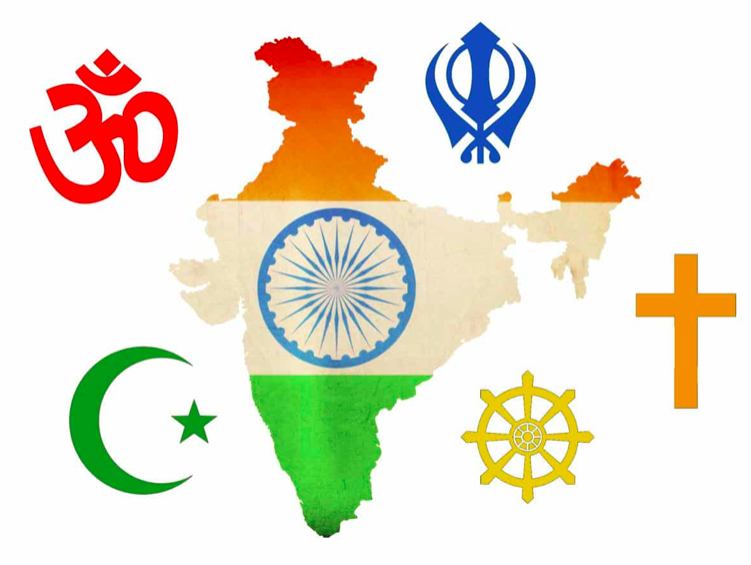Written by Rashtra Samarpan
Ashwini Upadhyay
Follow @AshwiniUpadhyay
Article 30 inter-alia states that minorities whether based on religion or language, shall have right to establish and administer educational institutions, but the question is, to whom is this article applicable? There are around 300 religions in the world and around 30 in India as well. Can every single one of them be considered as a religious minority under Articles 29-30? If yes, then why didn’t the government declare the followers of Bahaism and Judaism as minority?
The Preamble proclaims to guarantee every citizen ‘liberty of thought, expression, belief, faith, worship’. Articles 25-30 guarantee protection of religious, cultural, educational rights to majority and minority both. Keeping in view the constitutional guarantees for protection of cultural, educational and religious rights of every citizen, ‘minority’ was not defined in the Constitution. And instead of clearly defining ‘minority’ in the background of the constitutional scheme, Section 2(c) of the NCM Act 1992 and Section 2(f) of the NCMEI Act 2004 gives power to the Centre to notify any community as ‘minorities’, who might require special protection of religious, cultural and educational rights. Language of Section 2(c) of the NCM Act 1992 and Section 2(f) of the NCMEI Act 2004 is same and by using unbridled power under the Act, Centre arbitrarily notified 5 communities as minority on 23.10.1993.
Articles 14, 15, 19, 21 are golden corners of the Constitution. Therefore, the Centre cannot arbitrarily grant minority status. Framers never contemplated creating a National Minority Commission and Minority Affair Ministry on religious grounds. Articles 25-30 guarantee cultural religious freedoms to the majority and minority both. Moreover, unity and integrity is the goal of our Constitution. Hence, the concept of religious minority at national level is very dangerous for unity and national integration. Therefore, either minority-majority concept should be abolished in spirit of the Supreme Court’s Judgment in Bal Patil Case, otherwise minority must be identified at district level
Article 29 is assumed to relate to minorities but scope is not confined. It is available to ‘any section of the citizens residing in the territory of India or any part thereof having distinct language script or culture’. Hence, include majority also, as the then Chief Justice of India Justice Ray, pointed out in Ahmedabad St. Xaviers Case (1974). Internationally Minority is defined as “a group/community which is socially economically politically non-dominant and numerically very inferior in population, deserves protection from likely deprivation of their religious, cultural and educational rights by majority communities, who are likely to gain political power in a democratic form of government based on election”.
Although the word ‘minorities’ occurs in the marginal note of Article 29, it does not occur in the text. The original proposal of the Advisory Committee in the Constituent Assembly recommended thus: “(1) Minorities in every unit shall be protected in respect of their language, script and culture and no laws or regulations may be enacted that may operate oppressively or prejudicially in this respect.” [B. Siva Rao, “Select Documents” (1957) Vol. 2, Page 281] But after the clause was considered by the Drafting Committee on 1st November 1947, it emerged as a substitute of ‘section of citizens’. [B. Siva Rao, Select Documents (1957) Vol. 3 pages 525-26, clause 23, Draft Constitution]. It was explained that the intention had always been to use ‘minority’ in a wide sense, so as to include (for example) Maharashtrians who settled in Bengal. [7 CAD 923]
In Article 30(1), crucial words are: (a) minorities (b) establish and administer (c) educational institutions (d) of their own choice but the word ‘minority’ has not been defined in the Constitution. Motilal Nehru Report (1928) showed a prominent desire to afford protection to minorities but did not define the expression. Sapru Report (1945) also proposed a Minority Commission but did not define minority [The YearBook on Human Right (1950), pg. 490].
The UN Sub-Commission on Prevention of Discrimination and Protection of Minorities has define ‘minority’ (by inclusive definition) thus: (i) The term ‘minority’ includes only those non-document group in a population, which possess and which to preserve stable ethnic religious linguistic tradition or characteristics different from those of the rest of the population; (ii) such minorities should properly include a number of person sufficient by themselves to preserve such tradition or characteristics; and (iii) such minorities must be loyal to the State, which they are nationals.
Article 27 of the International Covenant on Civil and Political Rights does not define the expression but give the rights as under: “In those States, in which ethnic, religious or linguistic minorities exists, persons belonging to such minorities shall not be denied the right in community with the other members of their group, to enjoy their own culture, to profess and practice their own religion or to use their own language”. From the above, it is clear that ‘minority’ means a ‘socially economically politically non-dominant’ group, which is very inferior in population. It is a relative term, representing the very inferior numbers, sections or groups. In that sense, there may be religious minorities and linguistic minorities, etc.
After partition, Muslims and Christians, living in different parts, opted to continue to live in India. Therefore, at the time of giving final shape to the Constitution, framers felt it necessary to allay apprehensions and fears in their mind by providing special protection of religious, cultural, educational rights. At that time such protection was found necessary. The framers accepted common citizenship regardless of religion, language, culture , faith and engrafted Articles 25-30 to give security to all and not for the appeasement to some.
The Constitution of India is by the Indians and for the Indians. Globally, there are 6000 plus languages. Can we consider Chinese or French speaking people a linguistic minority? If yes, then India would end up having 60+ linguistic minorities. Linguistic minorities may be identified at district level and only Indian languages may be considered for protection under Articles 29-30 i.e. a Hindi speaking person is a linguistic minority in Kerala and Tamil speaking in Bihar. The same notion may follow for religious minorities too and only India originated religions may be considered as religious minorities.
Post Views: 172
राष्ट्र समर्पण एक राष्ट्र हित में समर्पित पत्रकार समूह के द्वारा तैयार किया गया ऑनलाइन न्यूज़ एवं व्यूज पोर्टल है । हमारा प्रयास अपने पाठकों तक हर प्रकार की ख़बरें निष्पक्ष रुप से पहुँचाना है और यह हमारा दायित्व एवं कर्तव्य भी है ।


